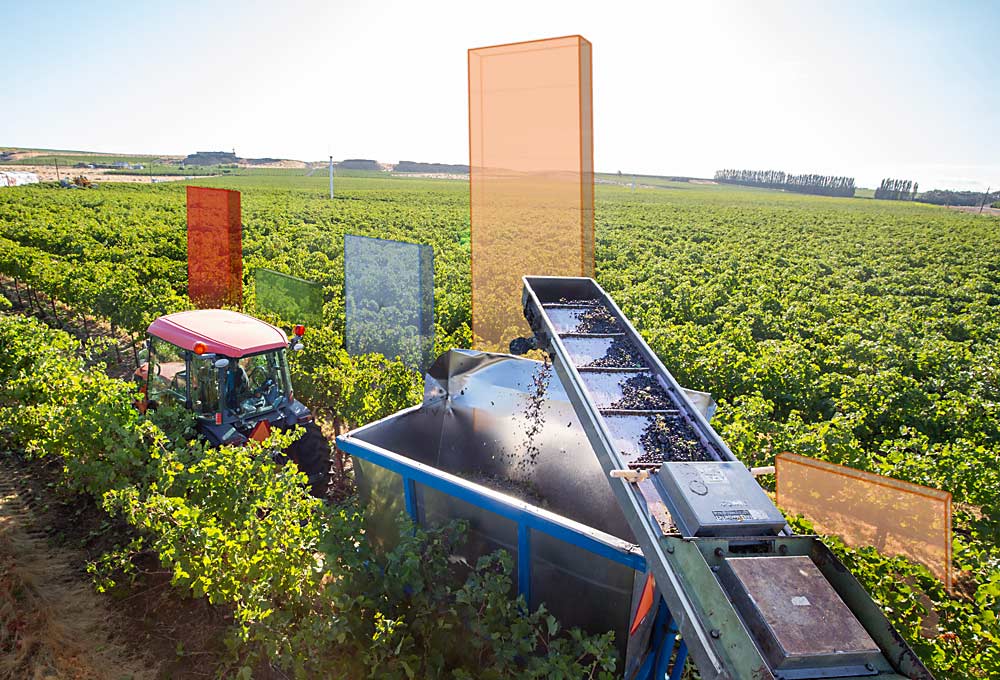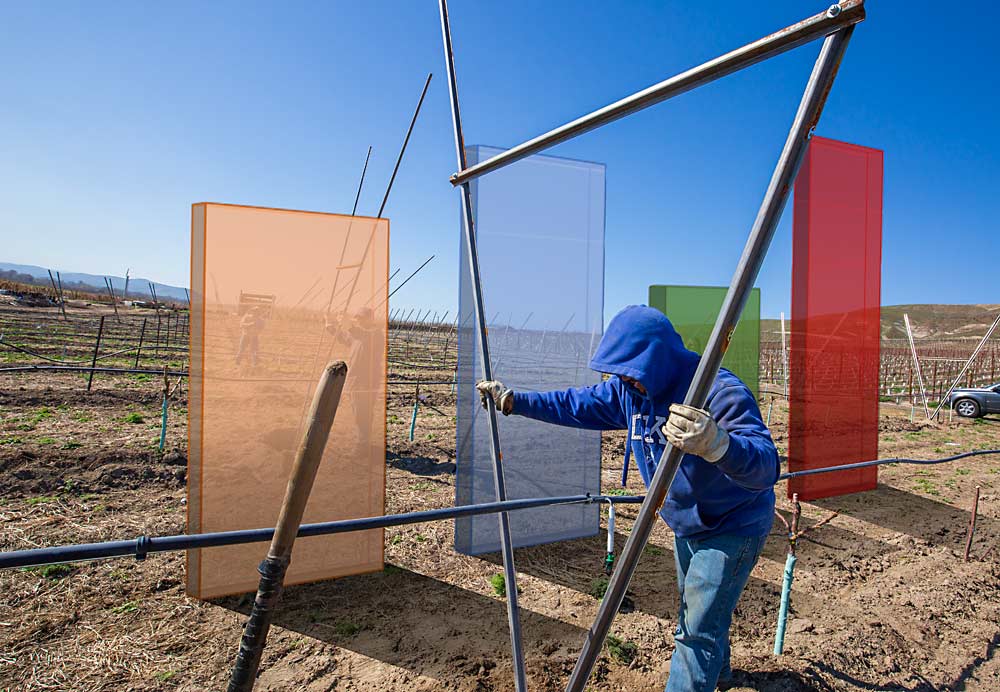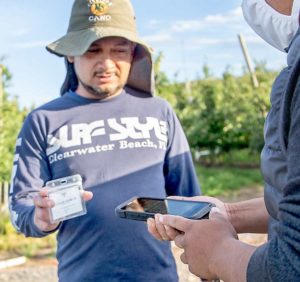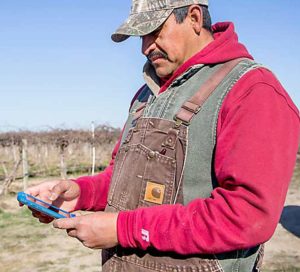
Farming in 40 hours: As states mandate overtime for agricultural workers, Good Fruit Grower continues to examine the impacts on the fruit industry.
How much does it really cost to grow your fruit in the 2023 economy?
Many growers now have detailed data to answer that question, and it’s lurking below the tracking tools now commonplace for paying piece-rate workers.
“We can look almost real-time at what it costs per acre, per block,” said Katrina Cantu, chief financial officer of Shaw Vineyards in Prosser. Managing a variety of vineyards targeting different price tiers, some blocks require more detailed hand management than others. “So, if we want higher detail, we pay a higher piece rate.”
Tracking tools available from AgCode pushed Shaw Vineyards back to a piece-rate model for nearly every vineyard task, so they can account for the cost of each vineyard task.
That trend of returning to piece-rate pay for analytics is underway in orchards, too.
“If you are paying piece rate, just looking at the speed tells you if I can move through a block more efficiently on V-trellis or vertical wall or older styles,” said Drew Washut, process engineer for Allan Bros. Inc. of Naches, Washington. “We want to get to a place where we have data-driven decisions,” he said, about systems, varieties and management practices.
Data-driven agriculture evokes buying some new sensor or service, but in the case of labor inputs, growers started asking their time-tracking companies for more analytics of the data they already collect every day.
“Ensuring people get paid (accurately) is the primary reason” Gilbert Orchards uses PickTrace, said Nick Willett, the Yakima, Washington, company’s application manager.
The labor savings and accuracy of ditching paper timesheets drove the company first to a different system, but it switched to PickTrace because the software’s real-time data analytics also gave Gilbert Orchards a way to look at labor inputs block by block. “So, we can evaluate if what we did made money, which varieties are performing the best and the least, and that can drive our renovation plans for the future,” Willett said.
In a survey last year, nine out of 10 growers said they could be doing more with the data they already had, said Harrison Steed, founder and president of PickTrace. Customers drove the company to develop more analytical tools: a real-time labor data app, known as Insights, to help managers make decisions in real time, while an enhanced reporting platform helps leaders do long-term planning.
“Any labor tracking system, it has the highest quality data on the farm: when people worked, where, what was the output,” he said. “It has to be accurate because you are paying people off of it.”
PickTrace isn’t alone in developing more labor analytics. At trade shows this winter, companies showed data dashboard examples for tracking crews nearing overtime thresholds and how real-time costs compared to budgets on a block-by-block basis.
For example, 2nd Sight BioScience of Spokane, Washington, has sold a weight-scale-based system to piece-rate-paying specialty crop producers for almost 10 years. More recently, the company added a tracking app so growers can track tasks and pay piece rate across the growing season.
“It’s not just about data, it’s: ‘Can you make more money with the data?’” said company CEO Kevin Oldenburg.
Now, with overtime pay kicking in after 48 hours per week in Washington, Cantu of Shaw Vineyards pulls a report every Thursday, looking at the hours workers have already spent and the job orders remaining to be filled.
That can lead to some hard decisions, added Marshall Edwards, Shaw’s vineyard operations manager. But at least they have hard data to work with.

For example, he sets a pruning budget for every block, based on historical data and crop load goals. But if the vines pushed many more buds last year and there are a lot more spurs than usual to clean up, he has no choice but to pay more to prune them. He and the vineyard managers must then look at other places in the season where they can cut costs.
“We can look at — here’s what we’ve spent, block by block, in hard farming costs, so we know what we’ve got to sell these grapes for,” he said. “We may have to tell the owners uncomfortable things, but we have the data to show that it is what it is.”
The more complex the farming operation, the more it helps to have data provide visibility on what is going on at different ranches.
“It’s a way to understand the totality of the business,” said Willett, who recently earned a master’s degree in business administration with a focus on data analytics. “For an organization like ours, with packing house and orchards, we are capturing a lot more data than a smaller farmer.”
Tech companies want to make analytics easier, so every farm doesn’t need its own data scientist. But every farm operates a little differently, and data that’s valuable for one grower might not be for another.
AgCode, for example, currently offers some 20,000 reports, said sales rep Joe Britton — with more to come to meet specialized needs, such as compliance with the Sustainable WA vineyard certification.
One challenge, Cantu said, is finding the reporting tools that work best for your own operation and how they manage finances.
Steed, from PickTrace, said customers tell him the data informs lots of tiny decisions that each save a little bit of money — which adds up in a world of tight margins.
Growers using a variety of tech tools shared successful examples:
—At Shaw Vineyards, AgCode tracks how much time and money goes into repairing its equipment. When a truck or tractor is in the shop more than on the job, Edwards said they know it’s time to cut their losses and replace it.
—At Gilbert Orchards, Willett runs reports to flag individual employees who are not meeting minimum wage during piece-rate work. Managers then know to spend more time doing one-on-one training with those employees, to help them get up to speed.
—At Allan Bros., Washut used the labor data to see if stem clipping was worth the cost. “We’re all trying to make money, and it seems like a good idea because quality matters,” he said, “but does it move the needle on gross margins?” Ranch managers told him stem clipping took about two hours per bin, but when he ran the numbers, it was actually taking two and a half. Now he can say: “In this trellis type, in this variety, stem clipping cost us this much more because it took this much longer,” and that can be compared with the packout gains. “If your starches and pressures say you need to get it off the trees in three days or you’ll need to change your storage regimes, it might be worth skipping the stem clipping,” he said. “It’s great having that real-time data to be proactive rather than reactive.”
—Sometimes, the data reveals that at one ranch, crews do a specific task much faster than at another ranch, even in the same variety and system, Washut said. That’s a sign that managers could be learning from each other. “If one person is doing it the best way, then why not have everybody doing it that way?” he said. “It’s been fun to open that communication and share good ideas and share good practices.”
—By looking at labor costs at a block level, instead of a ranch level, it’s much easier to see which blocks are actually profitable, said Shelly Durfey of Lighthouse Farms in Sunnyside, Washington. She uses FieldClock and found that for some older pear blocks that are “incredible producers,” they are spending far more to prune and pick them than other blocks.
—by Kate Prengaman








Leave A Comment